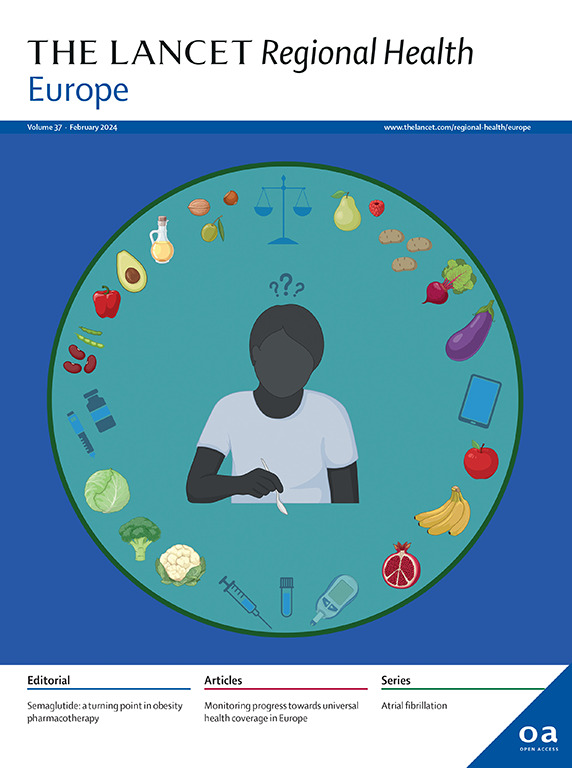Comparison of machine learning and human prediction to identify trauma patients in need of hemorrhage control resuscitation (ShockMatrix study): a prospective observational study
IF 13.6
Q1 HEALTH CARE SCIENCES & SERVICES
引用次数: 0
Abstract
Background
Machine learning could improve the timely identification of trauma patients in need of hemorrhage control resuscitation (HCR), but the real-life performance remains unknown. The ShockMatrix study aimed to compare the predictive performance of a machine learning algorithm with that of clinicians in identifying the need for HCR.
Methods
Prospective, observational study in eight level-1 trauma centers. Upon receiving a prealert call, trauma clinicians in the resuscitation room entered nine predictor variables into a dedicated smartphone app and provided a subjective prediction of the need for HCR. These predictors matched those used in the machine learning model. The primary outcome, need for HCR, was defined as: transfusion in the resuscitation room, transfusion of more than four red blood cell units in 6 h of admission, any hemorrhage control procedure within 6 h, or death from hemorrhage within 24 h. The human and machine learning performances were assessed by sensitivity, specificity, positive likelihood ratio, negative likelihood ratio, and net clinical benefit. Human and machine learning agreement was assessed with Cohen's kappa coefficient.
Findings
Between August 2022 and June 2024, out of 5550 potential eligible patients, 1292 were ultimately included in the analyses. The need for HCR occurred in 170/1292 patients (13%). The results showed a positive likelihood ratio of 3.74 (95% confidence interval [CI]: 3.20–4.36) and a negative likelihood ratio of 0.36 (95% CI: 0.29–0.46) for the human prediction and a positive likelihood ratio of 4.01 (95% CI: 3.43–4.70) and negative likelihood ratio of 0.35 (95% CI: 0.38–0.44) for the machine learning prediction. The combined use of human and machine learning prediction yielded a sensitivity of 83% (95% CI: 77–88%) and a specificity of 73% (95% CI: 70–75%). The Cohen's kappa coefficient showed an agreement of 0.51 (95% CI: 0.48–0.55).
Interpretation
The prospective ShockMatrix temporal validation study suggests a comparable human and machine learning performance to predict the need for HCR using real-life and real-time information with a moderate level of agreement between the two. Machine learning enhanced decision awareness could potentially improve the detection of patients in need of HCR if used by clinicians.
Funding
The study received no funding.
比较机器学习和人类预测来识别需要出血控制复苏的创伤患者(ShockMatrix研究):一项前瞻性观察研究
机器学习可以提高对需要出血控制复苏(HCR)的创伤患者的及时识别,但其在现实生活中的表现尚不清楚。ShockMatrix研究旨在比较机器学习算法与临床医生在确定HCR需求方面的预测性能。方法在8个一级创伤中心进行前瞻性观察性研究。在接到预警电话后,复苏室的创伤临床医生将9个预测变量输入到专用的智能手机应用程序中,并提供对HCR需求的主观预测。这些预测器与机器学习模型中使用的预测器相匹配。主要终点HCR需求被定义为:在复苏室输血,入院6小时内输血超过4个红细胞单位,6小时内任何出血控制程序,或24小时内出血死亡。人类和机器学习的表现通过敏感性、特异性、阳性似然比、阴性似然比和净临床效益来评估。人类和机器学习的一致性用Cohen的kappa系数进行评估。在2022年8月至2024年6月期间,在5550名潜在符合条件的患者中,1292名最终被纳入分析。1292例患者中有170例(13%)需要HCR。结果显示,人类预测的正似然比为3.74(95%置信区间[CI]: 3.20-4.36),负似然比为0.36 (95% CI: 0.29-0.46),机器学习预测的正似然比为4.01 (95% CI: 3.43-4.70),负似然比为0.35 (95% CI: 0.38-0.44)。人类和机器学习预测的结合使用产生了83%的灵敏度(95% CI: 77-88%)和73%的特异性(95% CI: 70-75%)。Cohen's kappa系数显示一致性为0.51 (95% CI: 0.48-0.55)。前瞻性ShockMatrix时间验证研究表明,使用现实生活和实时信息预测HCR需求的人类和机器学习性能相当,两者之间具有中等程度的一致性。如果临床医生使用机器学习增强的决策意识,可能会潜在地提高对需要HCR的患者的检测。该研究没有获得任何资助。
本文章由计算机程序翻译,如有差异,请以英文原文为准。
求助全文
约1分钟内获得全文
求助全文
来源期刊

Lancet Regional Health-Europe
Multiple-
CiteScore
19.90
自引率
1.40%
发文量
260
审稿时长
9 weeks
期刊介绍:
The Lancet Regional Health – Europe, a gold open access journal, is part of The Lancet's global effort to promote healthcare quality and accessibility worldwide. It focuses on advancing clinical practice and health policy in the European region to enhance health outcomes. The journal publishes high-quality original research advocating changes in clinical practice and health policy. It also includes reviews, commentaries, and opinion pieces on regional health topics, such as infection and disease prevention, healthy aging, and reducing health disparities.
 求助内容:
求助内容: 应助结果提醒方式:
应助结果提醒方式:


